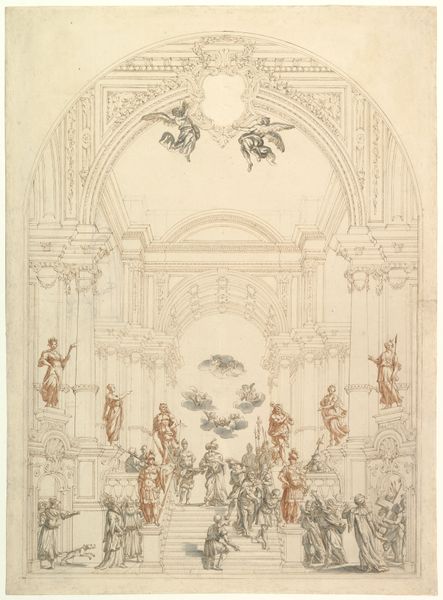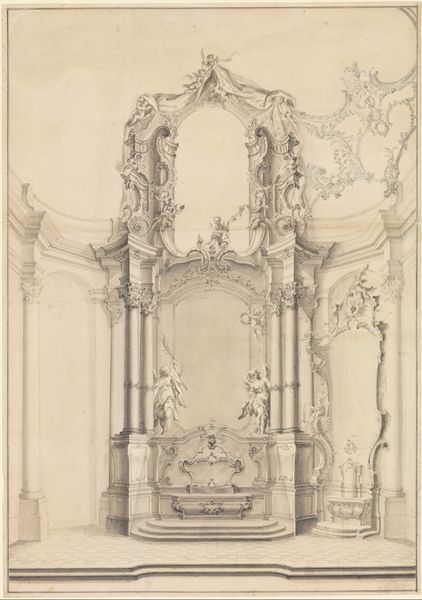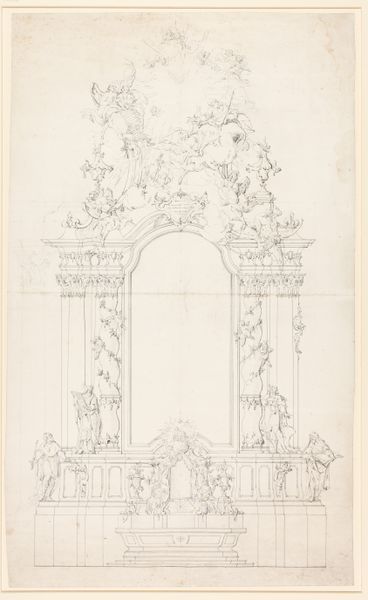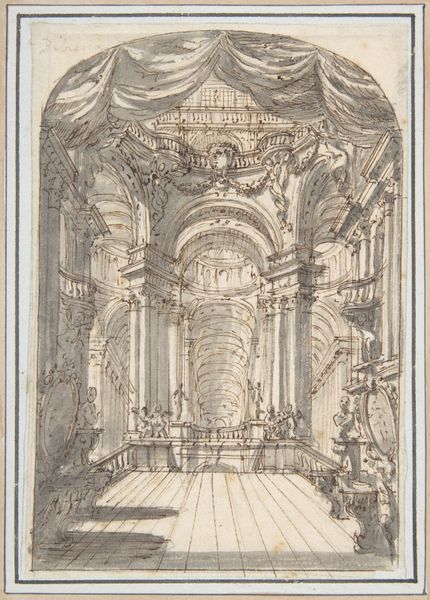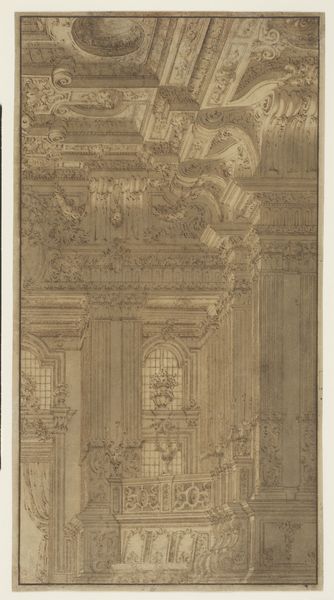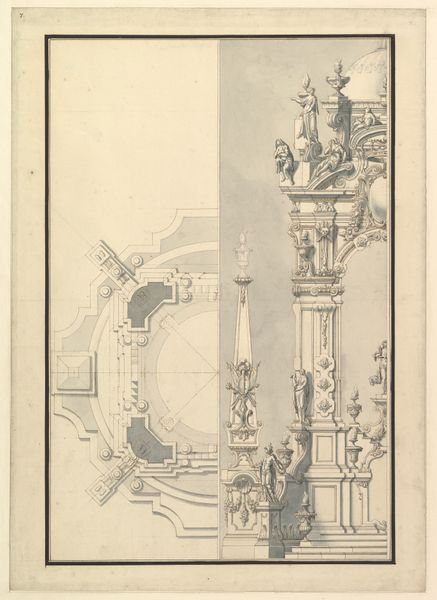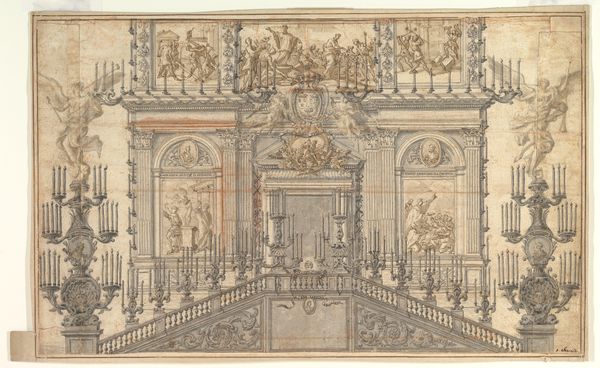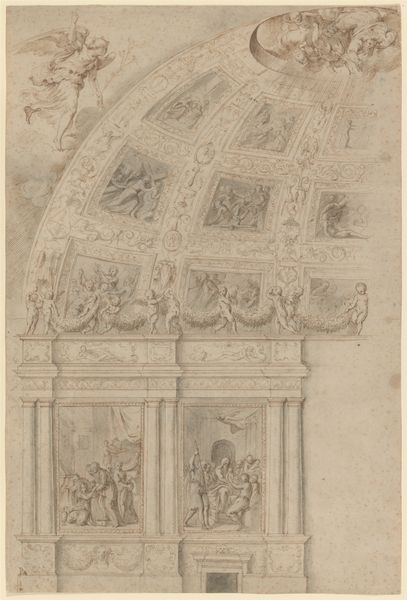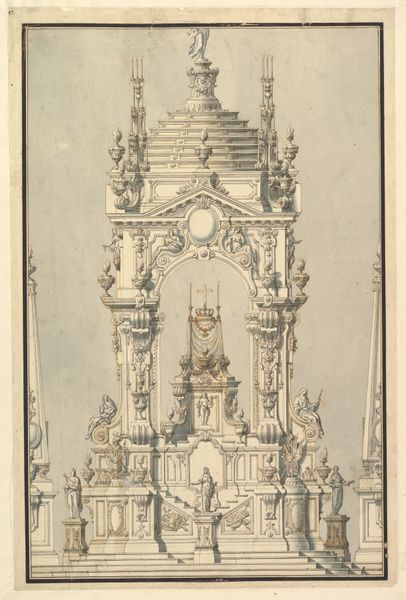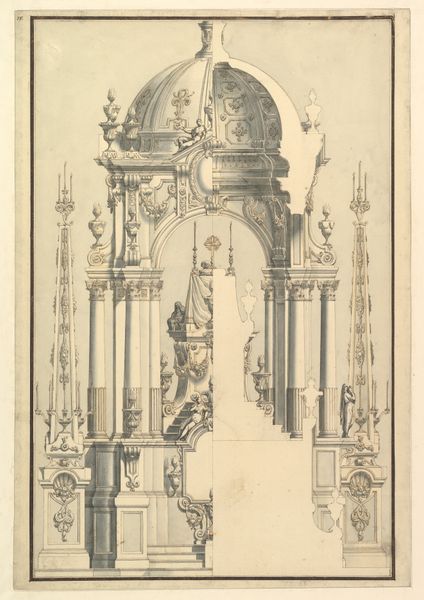
A Chapel with Figures of Statues en Grisaille of Faith, Hope and Charity and 4 Putti with Symbols of the Passion. 1696 - 1756
0:00
0:00
drawing, print, etching, architecture
#
drawing
#
baroque
#
pen drawing
# print
#
etching
#
etching
#
geometric
#
line
#
genre-painting
#
history-painting
#
architecture
Dimensions: 22-1/4 x 15-7/8 in. (56.5 x 40.3 cm)
Copyright: Public Domain
Editor: This is Giuseppe Galli Bibiena's "A Chapel with Figures of Statues en Grisaille of Faith, Hope and Charity and 4 Putti with Symbols of the Passion," created sometime between 1696 and 1756. It's a pen and etching work. The architectural details are so intricate! What strikes you about this piece? Curator: Considering Bibiena's architectural background, it's fascinating to see how this chapel design emphasizes materiality and process. The etching, essentially a reproducible print, democratizes access to such designs. Note the "grisaille," imitating sculpture. This relates to value—what labor went into this design? Was it ever intended to be built, or was the etching a product in itself, demonstrating Bibiena's capabilities? Editor: That’s interesting. I hadn't considered the print as a form of labor. Curator: Absolutely. The creation of the etching plate itself would involve significant skill and time, a direct engagement with the materials. And consider the context: the Baroque period, with its intense patronage system. How does the accessibility of this print disrupt the power dynamics normally associated with exclusive architectural designs? Did it allow other craftspeople or designers to appropriate his ideas, expanding Bibiena's influence and brand of style, thus shifting notions of authorship? Editor: I see what you mean. It’s not just a drawing; it's about disseminating a style, influencing architectural trends, almost mass-producing artistry. Curator: Precisely. It blurs the lines between "high art" and applied craft, prompting us to examine the production and consumption of visual ideas. Think about who owned these prints and for what purposes. The image, in its reproducible form, speaks volumes about material conditions and the broader social context. Editor: I’m going to be thinking about art making in completely new ways now. Thank you for that. Curator: And I, in turn, will look for future opportunities to examine design this way. It all relates to material context.
Comments
No comments
Be the first to comment and join the conversation on the ultimate creative platform.
